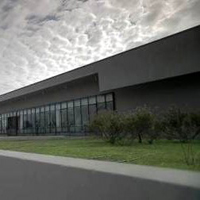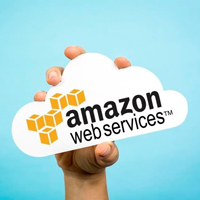In This Issue
- Mobile-1st Strategy
- Salesforce Mobility
- Cloud Mobile Wallet
- Report from the CEO
- GSMA EU Comments
- VZ Open Source Net
- Telefonica Data Ctr
- NetApp Acquisition
- Smith to NetApp BoD
- AWS Above the Rest
- Google Wins in Case
- Cybersecurity $400M
- Lawmakers Advice
- “Stop Data Breaches”
- Up Cyber Command
- Level 3 Security Move
- Coming DCIA Events
A Mobile-First Strategy to Reimagine Business
Excerpted from Baseline Magazine Report by Samuel Greengard
 Not that long ago, business productivity and performance revolved primarily around client-server architectures and desktop computing.
Not that long ago, business productivity and performance revolved primarily around client-server architectures and desktop computing.
Laptops and other mobile devices were viewed mostly as a way to get work done while away from the office or in the field.
Almost without exception, it was difficult and often incredibly time-consuming to sync contacts, emails, files, and other data across various devices and systems.
In addition, real-time data and information were still a far-off concept.
Today, mobility rules the computing universe.
Thanks to radical advances in mobile devices, cloud computing and back-end IT infrastructures, managers, professionals, technicians and others work on an anytime, anywhere basis—exchanging data instantaneously.
At the same time, consumers increasingly interact with businesses through smartphones, tablets, and other devices, using apps, geolocation features, scanners, cameras, speech tools, and more… Read More
Salesforce Mobile Snap-Ins for Service Cloud
Excerpted from Computer Business Review Report by James Nunns
 Salesforce is targeting a seamless, personalized customer service experience on any device with advancements to its Service Cloud.
Salesforce is targeting a seamless, personalized customer service experience on any device with advancements to its Service Cloud.
The CRM company’s introduction of Service Cloud Lightning Snap-ins is designed to help companies quickly deploy capabilities such as Cases, Knowledge, Live Chat, SOS, and Tap-to-Call to their mobile and web apps.
One of the key additions is that the SOS capability supports two way video, this means that agents can provide a more personal feel to resolving incidents.
The company says that the addition of Snap-ins comes in response to customers expecting personal engagement and immediate answers, which has made customer service more important than it has ever been.
Salesforce is able to provide these enhancements through the introduction of three key pieces of technology.
The first is the Unified Snap-in SDK for web which will help to ensure that customers have a seamless experience on web.
The full integration of Snap-ins into the Service Cloud Lightning platform means that agents have a 360-degree view of customers… Read More
Cloud-Based Mobile Wallet Introduced
Excerpted from Newswire Today Announcement
 Bell ID, the mobile payments specialist, recently acquired by Rambus has announced a new collaboration with First Data Poland to offer cloud-based mobile payments as a service to Polish banks.
Bell ID, the mobile payments specialist, recently acquired by Rambus has announced a new collaboration with First Data Poland to offer cloud-based mobile payments as a service to Polish banks.
Through this collaboration, Eurobank Poland has integrated Bell ID’s Secure Element (SE) in the Cloud software and First Data Poland’s data preparation, personalization, and processing services into its mobile wallet application.
As mobile payments are expected to see significant growth worldwide, Eurobank Poland’s implementation of Bell ID and First Data’s technologies is leading the way for easy, secure mobile payments to its more than one million customers through host card emulation (HCE) technology.
“Eurobank has always offered its customers innovative products, so mobile payments are a big priority,” adds Wojciech Huminski, Vice President of Eurobank.
“First Data and Bell ID have given us a leading cloud-based solution that helped us to create our own mobile app, ensuring convenience and security for our customers, while providing flexibility for future needs.”
“Our alliance with First Data makes life easy for banks,” comments David Orme, CEO of Bell ID… Read More
Report from DCIA CEO Marty Lafferty
 Following the very successful Mobile World Congress in Barcelona earlier this year, the DCIA is pleased to partner with GSMA in presenting the second 2016 installment of Mobile World Congress in Shanghai.
Following the very successful Mobile World Congress in Barcelona earlier this year, the DCIA is pleased to partner with GSMA in presenting the second 2016 installment of Mobile World Congress in Shanghai.
The GSMA represents the interests of the mobile industry worldwide, uniting nearly 800 operators with more than 250 companies in the broader mobile ecosystem.
Included are handset and device makers, software distributors, equipment providers, and Internet companies, as well as organizations in adjacent industry sectors.
The GSMA also produces industry-leading events such as the Mobile World Congress and Mobile 360 Series of conferences.
Mobile World Congress Shanghai will take place at the Shanghai New International Exhibition Center from June 29th through July 1st.
The 2016 event will showcase the incredible possibilities offered by mobile.
Senior industry professionals will gather, network, learn new ideas, and make important connections to grow their businesses in the years ahead.
Passionate consumers will also meet to discover the latest devices and innovative technologies being offered by the mobile industry.
The conference at Mobile World Congress Shanghai will feature two days of keynotes and track sessions exploring topics such as 5G, automotive, cybersecurity, digital commerce, gaming, the Internet of Things (IoT), hardware innovation, mobile media and content, mobile identity and personalization, and smart cities.
Confirmed keynote speakers include CEOs and senior leaders from companies like AT&T Mobility, Baidu, China Mobile, China Telecom, HTC, KDDI, Telenor Pakistan, and ZTE.
The 2016 exhibition will feature a unique space offering attendees the opportunity to learn about graphene-based innovations through interactive demonstrations and prototypes.
Graphene is set to have a profound impact on many of the building-block components of the mobile industry, such as display, sensor, and chip technologies, to name a few.
Also of note this year are the Connected Vehicle, Digital Commerce, and Global Device Summits; Mobile Security and Digital Transformation Forums, and Virtual Reality Zone.
Don’t miss this truly unique event. Make plans to join us in Shanghai from June 29th through July 1st, where our global audience will celebrate the individuality of mobile.
If you’d like to attend at no charge as a guest of the DCIA, please contact me, or simply register here with the special code FEPSMCM7OE. Share wisely, and take care.
GSMA Comments on European Council Decision
Excerpted from TelecomTV Insights Report
 The rapid evolution in mobile broadband and broadcast services requires Europe to keep all options open for how the UHF spectrum band will be used, in particular in the sub-700MHz band.
The rapid evolution in mobile broadband and broadcast services requires Europe to keep all options open for how the UHF spectrum band will be used, in particular in the sub-700MHz band.
Mobile data usage continues to grow dramatically as more people consume increasing amounts of content on mobile devices.
However, Europe has fallen behind other developed regions in fast mobile connectivity, putting the future of mobile, as well as the wider economy, at risk.
The timely and coordinated release of the 700MHz band is critical for the development of mobile communications in Europe.
We applaud the positive developments in countries such as France and Germany that have already licensed the 700MHz frequencies well ahead of the 2020 deadline suggested by the proposal.
The GSMA encourages the co-legislators to adopt similar forward-looking approaches as it is essential that Member States have flexibility to move sooner to respond to the sustained growth in mobile data traffic.
To prevent frequency overlap with non-Union countries delaying implementation it is crucial for the proposal to maintain dates… Read More
Verizon’s Open Source Network Points Way
Excerpted from Daily Cloud Report by Jeff Ferry
 Verizon has moved a major portion of its managed services network to open source infrastructure, demonstrating the viability of so-called white box open source networking for enterprises as well as service providers like Verizon.
Verizon has moved a major portion of its managed services network to open source infrastructure, demonstrating the viability of so-called white box open source networking for enterprises as well as service providers like Verizon.
That’s according to Verizon’s Director of Network Infrastructure Planning, Chris Emmons.
The rise of white box networking has been much discussed for the last five years, using software-defined networking (SDN), as an important shift in networking architecture threatening the dominant position and high profit margins of established networking vendors led by Cisco Systems.
That big shift has been slow to arrive, but Verizon’s deployment could indicate the shift is underway.
According to Emmons, the Verizon deployment shows a disaggregated white box architecture is viable, and delivers significant benefits.
Benefits he cited include simpler operational management of the network, greater scalability, an avoidance of bandwidth bottlenecks—and more choices of vendors.
SDN is an approach to computer networking that allows network administrators to manage network services… Read More
Telefonica Launches New Data Center in Chile
Excerpted from BNA Americas Report by Patrick Nixon
 Telefonica Chile has launched operations at a new Tier III data center in Chile, its third in the country from which the company plans to offer co-location, hosting, IaaS and managed services.
Telefonica Chile has launched operations at a new Tier III data center in Chile, its third in the country from which the company plans to offer co-location, hosting, IaaS and managed services.
The facility, located 40 km outside capital Santiago, will form part of Telefonica’s network of 83 data centers worldwide and will be of strategic importance in Latin America.
The building, measuring 5,000 square meters, has 1,000 square meters of space for housing client equipment and for offering Telefonica cloud services.
That space can be expanded to 3,000 square meters and multiply its energy capacity threefold.
The data center is Tier III-certified, includes security measures based on telemetry and can withstand earthquakes measuring 9 on the Richter scale.
According to Telefonica, the data center is the first in Chile to offer local Open Cloud solutions.
These 100% cloud solutions are based on OpenStack, which is a free and open-source software platform for cloud computing… Read More
NetApp Acquisition Will Change Storage Industry
Excerpted from Channel Partners Report by James Anderson
 Watch out for consolidation in the storage industry, SolidFire‘s Mark Conley warns.
Watch out for consolidation in the storage industry, SolidFire‘s Mark Conley warns.
The director of channel sales said lukewarm increases in IT expenditures and a more difficult fundraising climate may encourage smaller companies to consider M&A.
His own company recently was bought by the systems manufacturer NetApp.
The acquisition closed in February.
Conley said the deal will have a major impact on the storage industry.
Channel Partners: Can you talk about the impact the acquisition by NetApp has had on SolidFire?
Mark Conley: It has been really great. We have difficulty — like any small startup company — having the amount of legitimacy that we believe we should have and the amount of attention we want to get.
Having the NetApp name behind us gives us instant credibility, gives us instant access to a lot of accounts that wouldn’t even talk to us before… Read More
NetApp Appoints Steve Smith to BoD
Excerpted from Market Wired Press Announcement
 NetApp today announced that Steve Smith, CEO and President of Equinix, has joined its Board of Directors (BoD).
NetApp today announced that Steve Smith, CEO and President of Equinix, has joined its Board of Directors (BoD).
Smith’s appointment brings the number of NetApp board members to ten, nine of whom are independent.
“Steve’s 25 years of broad experience and work as an active CEO will add a valuable perspective to our board of directors,” said George Kurian, Chief Executive Officer at NetApp.
“He has a wealth of deep technology expertise and understanding of how IT environments are evolving.”
“We look forward to benefiting from his insight.”
“Steve is both a veteran and a visionary and will further strengthen our board’s breadth of talent and background,” said NetApp Chairman of the Board Mike Nevens.
“We are excited to bring him on to our board.”
“I am honored to join the board of a company so passionate about customer success,” said Smith.
“I look forward to working together with the NetApp board and management team to continue to deliver their compelling vision… Read More
AWS: A Cloud Above the Rest
Excerpted from ZDNet Report by David Gerwitz
 It’s hard to fully appreciate the value that Amazon Web Services, the company’s cloud services operation, provides to customers until you look at one specific example: Netflix.
It’s hard to fully appreciate the value that Amazon Web Services, the company’s cloud services operation, provides to customers until you look at one specific example: Netflix.
Amazon is far more innovative than Google, Apple – or any other tech company in existence. Here’s why.
According to Time Magazine, Netflix users consume more than a third of all Internet download traffic during peak hours. Amazon, on the other hand, now offers four times as many movies as Netflix.
In the area of streaming video services, Amazon and Netflix are clearly direct competitors.
Keep that in mind for this next fact: Netflix has spent the last seven years moving onto (not away from) Amazon’s Web Services.
Netflix has been migrating as much of its on-premises operations as it can to AWS, even though Amazon is a direct competitor to Netflix’ primary income source.
Netflix, as far back as 2006, knew Amazon was offering a competing video streaming service, and still undertook the migration to AWS… Read More
Google Prevails in Code Copyright Case
Excerpted from NY Times Report by Nick Wingfield and Quentin Hardy
 A jury ruled in favor of Google on Thursday in a long legal dispute with Oracle over software used to power most of the world’s smartphones.
A jury ruled in favor of Google on Thursday in a long legal dispute with Oracle over software used to power most of the world’s smartphones.
Oracle contended that Google used copyrighted material in 11,000 of its 13 million lines of software code in Android, its mobile phone operating system.
Oracle asked for $9 billion from Google. Google said it made fair use of that code and owed nothing.
The victory for Google cheered other software developers, who operate much the way Google did when it comes to so-called open-source software.
Unlike traditional software created by corporations and tightly held, open-source products are released, often with some restrictions, for anyone to use and modify.
“Great news for progress and innovation,” Chris Dixon, a technology investor with Andreessen Horowitz, the venture capital firm, posted on Twitter after the verdict.
Android relies in part on Java, an open-source software language that Oracle acquired when it bought Sun Microsystems… Read More
Cybersecurity Investment to Reach $400 Million
Excerpted from ReadWrite Report by David Curry
 The cybersecurity industry could see a boost in venture capital, thanks to new threats the Internet of Things (IoT) provide to smart homes, autonomous cars, and future factories.
The cybersecurity industry could see a boost in venture capital, thanks to new threats the Internet of Things (IoT) provide to smart homes, autonomous cars, and future factories.
Investment in cybersecurity rose by 78 percent in 2015 to $228 million and Lux Research expects it to reach $400 million this year, in part because of the rapid adoption of IoT devices.
“Connected consumer and business products have begun flooding the market, but security has been an afterthought.”
“The world now has to figure out how to secure the multitude of things that have recently become connected,” said Lux Research Vice President, Mark Bunger.
Security for IoT systems is critical, especially in situations where an entire grid of devices could be turned offline. Security services are cropping up all across the globe to tackle the issues raised from IoT and a growing reliance on computers handling product management and logistics.
Most of the startups want to create a horizontal platform, capable of securing multiple IoT devices within a network.
Behavioral analysis and IoT authentication are also high up there on the list of priorities for the security startups mentioned… Read More
Lawmakers Send Cybersecurity Advice to Colleagues
Excerpted from Report by ZDNet Report by Zack Whittaker
 Here’s a shocker: Congress is really bad at cybersecurity.
Here’s a shocker: Congress is really bad at cybersecurity.
The political capital is constantly facing network attacks and hacks from outside hackers and nation states — and that’s before the CIA wages its own wave of targeting intelligence committee members.
Most lawmakers have never heard of PGP or even SSL, let alone used it (and most lawmakers still don’t).
For some, it’s an endemic problem that bleeds into the political world — which might explain why some of its cybersecurity legislation is so ill-conceived and badly thought-out.
The proposed bill would put every American at risk of being spied on by foreign nations, hackers, or even the next US President.
It’s no wonder a bipartisan duo of computer science majors turned politicos got tired of it.
House lawmakers Ted Lieu (D-CA,) and Will Hurd (R-TX) penned an email to their colleagues Monday warning them of some of the biggest dangers and threats to their information and operational security, amid a recent spate of cyber-attacks… Read More
“Stop the Data Breaches”
Excerpted from Associations Now Report by Ernie Smith
 In the latest chapter of the long-running policy dispute between retailers and the financial industry over who is responsible for improving consumer data security, an array of financial groups has launched a new campaign to pressure Congress to pass legislation requiring more protections from merchants.
In the latest chapter of the long-running policy dispute between retailers and the financial industry over who is responsible for improving consumer data security, an array of financial groups has launched a new campaign to pressure Congress to pass legislation requiring more protections from merchants.
The financial industry is getting frustrated by the slow progress on a key piece of data-security legislation sitting in Congress.
So to play up the impact of the measure, financial groups are amplifying a new call to action.
The “Stop the Data Breaches” campaign aims to draw attention to the costs associated with merchant data breaches and make the case that legislative action is needed.
It’s backed by seven trade groups: the American Bankers Association (ABA), the Consumer Bankers Association (CBA), the Credit Union National Association (CUNA), the Independent Community Bankers of America (ICBA), the Financial Services Roundtable, the National Association of Federal Credit Unions (NAFCU), and The Clearing House.
The groups support the Data Security Act, versions of which (HR 2205 and S 961) are up for a vote in the House and Senate… Read More
Lawmakers Push to Elevate Cyber Command
Excerpted from The Hill Report by Katie Bo Williams
 A bipartisan group of Senators wants to bring the Senate version of a national defense bill in line with its House counterpart on a change in authority for the US military’s cyber-unit.
A bipartisan group of Senators wants to bring the Senate version of a national defense bill in line with its House counterpart on a change in authority for the US military’s cyber-unit.
An amendment to the National Defense Authorization Act (NDAA) would direct the president to elevate US Cyber Command to a standalone warfighting entity, pulling it out from under the authority of Strategic Command.
The House version of the legislation, passed 277-147 last week, already includes a similar provision.
The move appears to have widespread support from lawmakers, as well as Adm. Michael Rogers, the unit’s head. He said last month that elevating the unit to a full combatant command would make it more nimble and “generate better mission outcomes.”
But the White House opposes a statutory requirement that the unit be elevated.
The administration, which is threatening a veto on the House version of the bill, argues that the secretary of Defense and chairman of the Joint Chiefs of Staff “should retain the flexibility to recommend to the President changes to the unified command plan that they believe would most effectively organize the military to address an ever-evolving threat environment… Read More
Level 3 Makes Security a Network Matter
Excerpted from Light Reading Report by Carol Wilson
 Level 3 Communications is adding a new wrinkle to security services, introducing a new cloud-based service developed on next-generation firewall technology that has been built into its global network to replace on-premises security infrastructure.
Level 3 Communications is adding a new wrinkle to security services, introducing a new cloud-based service developed on next-generation firewall technology that has been built into its global network to replace on-premises security infrastructure.
The Enterprise Security Gateway service is delivered from 40 Level 3 points of presence globally, can protect data on any device and is available to subscribers of any carrier.
The new service moves the security perimeter from the enterprise itself to the Level 3 network: One of its key goals is to address the rising costs of security for enterprises, which currently spend up to 60% of their IT dollars on that one function, says Chris Richter, Senior Vice President of Global Security Services for Level 3 Communications.
It covers a range of security issues including anti-malware with sandboxing, data loss protection, application awareness and enforcement and next-generation firewall.
“This new service is very powerful in ability to stop, block and detect attacks,” he commented.
“We have the horsepower, the network reach, the global reach, so we thought, ‘Why not roll out gateways… Read More
Coming Events of Interest
DataCloud Europe 2016 — June 8th-9th in Monte Carlo, Monaco. The 2016 conference will focus on cloud computing advances and changes in data management, with a stellar line-up of speakers including global infrastructure leaders and subject matter experts.
Cloud and DevOps World Forum 2016 — June 21st-22nd in London, England. Now in its eighth year, C&DWF is firmly established as the leading content-led exhibition for the European Cloud and DevOps community and the premiere meeting place for CIOs.
2016 Creative Storage Conference — June 23rd in Culver City, CA. The tenth annual CS will bring together digital storage providers, equipment manufacturers, software distributors, and professional media and entertainment end-users to explore the conference theme “The Art of Storage.”
Security of Things World — June 27th-28th in Berlin, Germany. Topics include securing cyber physical systems for IoT, expanding IT security with intelligence-led ops, business continuity management considerations, data privacy in an interconnected world, and security strategies.
Mobile World Congress Shanghai — June 29th – July 1st in Shanghai, China. MWC Shanghai is a very unique gathering that brings together industry participants ranging from C-Level mobile executives to end-user consumers passionate about mobile.
Industry of Things World Europe — September 19th-20th in Berlin, Germany. IoT business models, new IoT markets and strategies, product lifecycle management, next generation data handling and value assessment, IoT organizational impacts, and IoT security issues.
Government Video Expo — December 6th-8th in Washington, DC. GVE is the East Coast’s largest technology event for broadcast and video professionals, featuring a full exhibit floor, numerous training options, free seminars, keynotes, panel discussions, networking opportunities, and more.
